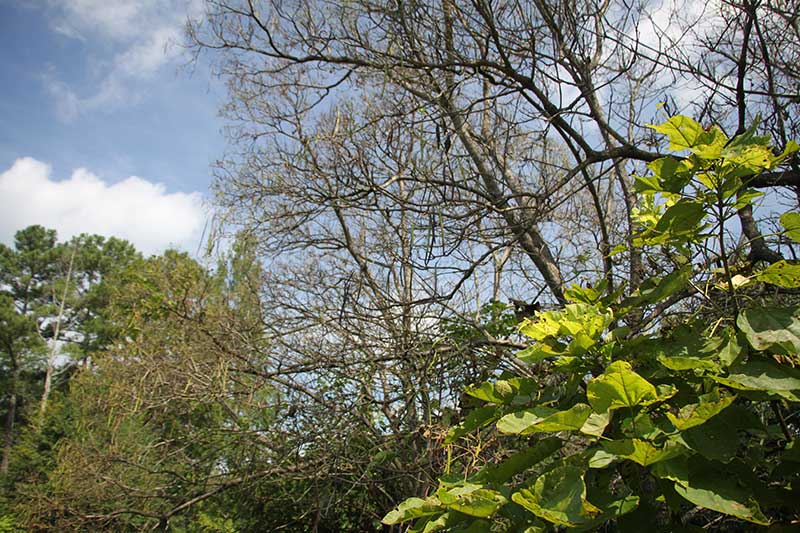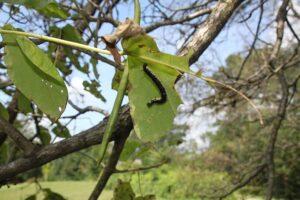
It was the early 90’s, we were living on a small farm in West Georgia. Our little farm pond never produced any decent fishing, but our neighbors had a pond that was always stocked with Blue-gill, Largemouth bass, and Channel cats. Some of my most fond memories involve catfishing in the summer with my grandfather, but it was more than just fishing—it was a part of rural living. Farming, hunting, and fishing were more than a pass time, it was necessary to keep food on the table.

“Go shake that tree” he would tell me before heading out to the neighbor’s farm pond. After giving it a good shake, over a hundred black and yellow worms came raining down. These thick, 2-3-inch-long hornworms, also known as Catawba worms, are a favored bait of many fishermen and work well for catching blue-gill, bass, and catfish. These worms are actually caterpillars, larvae of the catalpa sphinx moth (Ceratomia catalpa) which is a fairly drab, inconspicuous grey moth with mottled patterns on its wings. Sphinx moths typically emerge from the ground in spring once they have completely metamorphosed. Once they have found a mate, the female will lay a cluster of small white eggs on the underside on a catalpa leaf. The trees are typically fully vegetated and have completed flowering with fully formed seed pods when the young hatch. After a few short weeks, the worms can completely defoliate a large tree. Once they have eaten their fill, the caterpillars will travel to the base of the tree where they will burrow in the ground, pupate, and emerge as adults.

Catawba worms feed exclusively on the leaves of the catalpa tree, of which there are two species in North America. The Northern Catalpa (Catalpa speciosa) and the Southern Catalpa (Catalpa bignonioides). The Northern Catalpa was extensively farmed in the mid to late 1800’s as a fast-growing source of lumber for fence posts (barb wire had just been invented) as well as for cross-ties for railroads. These trees were and still are a favorite tree to plant near a lake or pond for their free bait in mid to late summer.

In today’s fast-paced, technology-driven world we sometimes forget where we come from. It’s not hard to spend a small fortune over the years on fishing tackle or bait shops. There will always be a newer lure, or new formula for catfish stink bait, but in my opinion, nothing beats shaking a tree.
Article written by: James Stone /Assistant Lake Operation Manager


